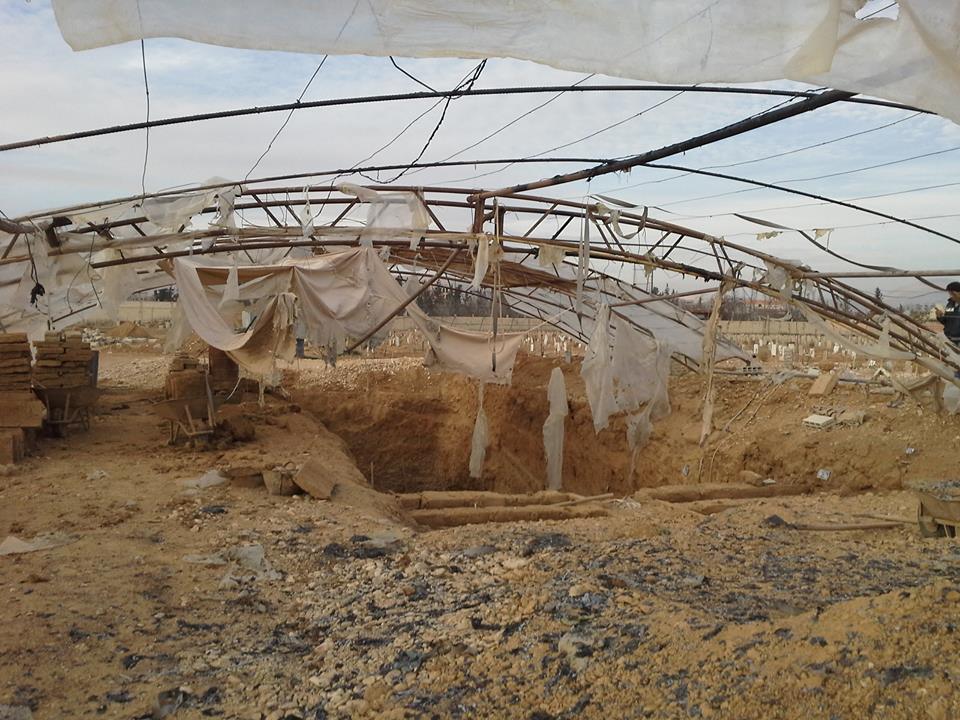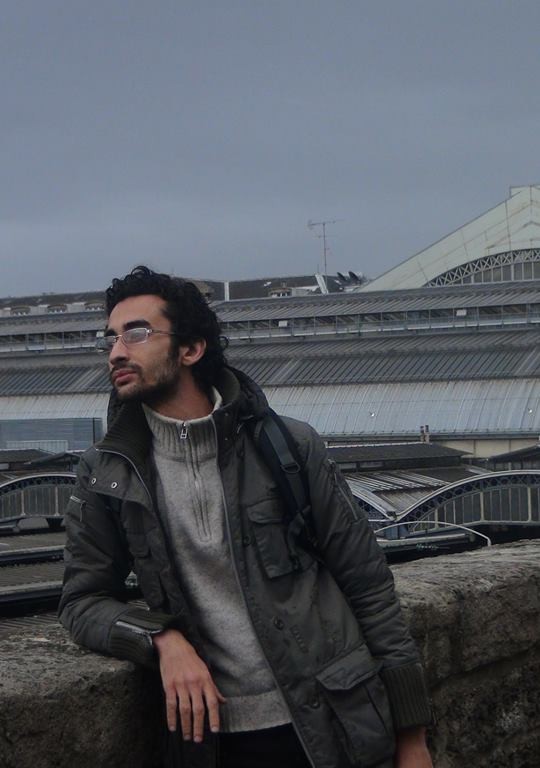Bombs fell on the building, destroying its floors. But the building did not vanish, it sank into underground floors for those who once dwelled it above. Just as population density increases upwards, death density can increase grave-floors downwards. As such, the people of Douma now construct their final resting places. They will not, of course, fall short of basic material, as home rubble is aplenty.
The graveyard was announced full, a local council member in Douma told SyriaUntold. Even agricultural lands no longer suffice. In 2015 alone, over 6,000 victims fell in the Damascene suburb town, according to the Violations Documentation Centre (VDC). This number is enough to destroy all the farming lands there, upon which the population depends entirely for their food supply. So, the grave-digger resorted to creating sets of three-meters-deep holes, in which graves were designed in a staircase form, to occupy less surface space.
In Douma, folks may burry dozens of victims in a single day, as they did after the 22 August Massacre in 2015. Over a hundred people were killed that day after the regime airforce hit several rockets at a popular market place in a residential part of the town. That’s why people from Douma need to economize in grave spaces. It may be a luxury for some to build their homes in mounted floors, but It’s now a luxury for Dumanians to build their graves on plane grounds.
The war might have taught us that life and death on this planet are but a coincidence. Syrians can survive for stepping a yard away, or die for taking a right turn on the wrong day. However, Douma graves have taught us that death has art forms of its own in this war. But unlike the immortalizing arts of Pharaonic mummies, in this war nihilism rules the day.
It may seem simple at first, but constructing those graves takes a great deal of precision, as any flaw can cause a cave-in. The leveling of their ascendance unto the surface is measured with a precise meter. They usually have six floors of one grave each. This invention was initiated in Douma and spread rapidly to other towns of the Damascene Ghoutah suburbs.

In this, we are reminded of what the people of Homs have been doing since 2011; turning their playgrounds into graveyards. It may be fitting to remember that several of those parks were graveyards to begin with: Bab Houd Park for instance, or Damascus Road Park, to name a few. These parks were taken back by the war to what they once were decades ago: graveyards. Some graves are nameless, either due to the absence of acquaintances able to identify the bodies before they were buried, or because they were shred to pieces.
However, the ill-fate of Douma victims was not just that some of their layered-graves are nameless, but that even those graves were bombarded. On 14 February 2016, the town graveyard was shelled, it included several layered-graves. That day Kasem Ballah, the graveyard manager in the Douma local council, was killed. He had buried his own two children, Osama and Yumna, only a few days earlier there. They had also been killed by the shelling. We do not know if it was their graves, or those of others, that were destroyed that day.
The regime usually buries those that vanquish under torture in mass graves. But respect for the victims has prevented people in Douma from burying them the same way. As for ISIS, at least they will not destroy those graves as they’ve done in areas under their control. They are not above ground level, and thus will not “undermine the monotheism of God” by ascending too high, according to their Wahhabi theology.
Perhaps one day, a researches will come to Douma, in search of an extinct civilization. He will unearth its grounds, and recall that death has its own echelons in Douma, just as life does.




